- Therapeuten
- Profi
Discussion of Cold Damage with Commentaries for the Clinic
Shang han lun
- Verlag: Eastland Press
- ISBN: 9780939616374
- 2023, 754 pages
89,99 €
inkl. MwSt.
plus Versandkosten
Abhängig von der Lieferadresse kann die MwSt. an der Kasse variieren.
Lieferzeit: ca. 5 - 10 Tage/days
Beschreibung
This book is a new translation and annotated guide to the text and clinical applications of Zhang Zhong-Jings Discussion of Cold Damage (Shäng hán lùn), which since the 3rd century has been the most important classical reference for treating externally-contracted diseases in traditional East Asian medicine. The core of the book are translations of the 398 main paragraphs of the Song dynasty edition (11th century), which covers tài yáng, yáng míng, shào yáng, tài yïn, shào yïn, jué yïn as well as sudden turmoil, yin-yang exchange, and relapse after recovery due to consumption.
Each entry begins with the original text of the paragraph in Chinese and its translation. This is followed by an explanation of the text and its significance, touching upon the specific clinical relevance of the passage as well as background issues. For paragraphs that include herbal formulas, the original Chinese is presented together with a translation and brief explanation of the composition. Methods of preparation, both original and modern, are included.
A distinguishing feature of this book are the commentaries that are provided for each paragraph, selected from amongst the most respected scholar-practitioners on the Discussion of Cold Damage during the past thousand years. The reader is thereby given direct access to how prominent physicians have interacted with this text in the past, illuminating some of the more practical approaches to it. Carefully selected case histories are appended to relevant paragraphs to help the reader gain insight into the clinical utility of the formulas they contain.
Throughout the book the authors, both of whom are practitioners with many decades of experience in Chinese medicine, provide their own comments about issues raised in the text. This includes textual interpretation as well as discussion of the clinical aspects of the paragraphs.
There is also a glossary, table of people noted in the text, bibliography, and full index.
List of Tables
Naturmed´s opinion: It´is a fascinating topic. So many therapists are facing the transmission of classical texts in the daily practice. It is important to understand the theory but using it in the clinic is a different story. Great that such top specialists wrote this book!
Introduction
Chapter 1: Differentiating the Pulse and Symptoms of Tài Yáng Diseases along with Treatment
Chapter 2: Differentiating the Pulse and Symptoms of Yáng Míng Diseases along with Treatment
Chapter 3: Differentiating the Pulse and Symptoms of Shào Yáng Diseases along with Treatment
Chapter 4: Differentiating the Pulse and Symptoms of Tài Yïn Diseases along with Treatment
Chapter 5: Differentiating the Pulse and Symptoms of Shào Yïn Diseases along with Treatment
Chapter 6: Differentiating the Pulse and Symptoms of Jué Yïn Diseases along with Treatment
Chapter 7: Differentiating the Pulse and Presentation of Sudden Turmoil Disease along with Treatment
Chapter 8: Differentiating the Pulse and Presentation of Yin-Yang Exchange and Relapse After Recovery due to Consumption along with Treatment
Appendix 1: Discussion of Cold Damage Measurements Through the Ages
Appendix 2: Glossary
Appendix 3: People Noted in the Text
Appendix 4: Bibliography
Endnotes
Index
Comments on the book Discussion of Cold Damage:
I really don’t think that the readers of The Lantern need an explanation of why the Shang Han Lun (Discussion of Cold Damage) is such a crucial text for Chinese medicine studies.
So let’s go right to the most important question for a book review: How does this translation compare to the several that are already out?
Shang Han Lun: On Cold Damage by Craig Mitchell, Feng Ye, and Nigel Wiseman
The Mitchell-Feng-Wiseman Shang Han Lun: On Cold Damage is fabulous for learning the language of the Shang Han Lun, including pinyin with tones and characters for each passage, and explanations of the nuances of various technical terms that are important for Shang Han Lun studies. But the attention to language–which I hasten to say is highly valuable for the Shang Han Lun literature in English as a whole–can tend to obscure the immediate clinical application of each clause.
Shang Han Lun Explained by Greta Young and Robin Marchment
Young and Marchment’s Shang Han Lun Explained is great on content, clinically handy and concise and includes case histories, but is heavily pinyin oriented. This is perfect for Australia where pinyin is the standard for both teaching and prescription guidelines, but may be somewhat off-putting elsewhere. Too, the book layout in Shang Han Lun Explained is rather cramped and dense, whereas the Eastland book layout and design is, as usual, a delight and makes reading a pleasure.
Simple differences in word choice can make the difference between easy comprehension and confusion that brings the reader up short, wondering Huh?
As a small example, chosen at random from Young and Marchment’s text, paragraph 238 starts off: “Yang Ming disease, there is purgation, if there is anguish and vexation …”
The Bensky translation is more clear: “For yáng míng diseases that have been purged, if there is anguish and vexation …”
Again, Shang Han Lun Explained describes the traditional dosages, but does not explain until an appendix at the end what may be meant by “liang” or “sheng.” The cooking method does explain that “one dou” is “(2L)” and “2 sheng” is (400 mL), but it is inconsistent and the reader is often left having to stop reading and run some simple math through her head to get the complete directions. Discussion of Cold Damage: with commentaries for the clinic avoids this by clearly writing out both the traditional dosages (ie liang or sheng) but also describes the process in modern measurements.
Discussion of Cold Damage by Guohui Liu and Henry McCann
Guohui Liu and Henry McCann’s Discussion of Cold Damage is the scholar’s dream, going into great depth on almost every possible point. This true wealth of detail can however tend to overwhelm the most clinically important issues. This pitfall is avoided in the Eastland book. For example, Liu’s book goes into seven pages of detail on Clause 100, paying especial attention to the question regarding the meaning of “yang pulse” and “yin pulse.” The Eastland book, true to its principle of adhering to the consensus of the commentators of the last thousand years, translates it as floating and deep pulse and allows the commentators to make the case for this choice.
Verdict
In short, the Ma and Bensky Discussion of Cold Damage with Commentaries for the Clinic is excellent for actual clinical use. It cuts right to the chase, with everything aimed at clarity to help you understand and employ the Shang Han Lun as you are dealing with patients.
In fact, I have already adopted this as my go-to reference text for Shang Han Lun, despite having numerous Chinese editions and all the other English translations mentioned here.
It is easy to read, and easy to take in, and the eye is allowed to go where it needs in a text that is complex by its nature. The characters for each classical paragraph appear, but the pinyin is not, which has the effect of making the text much less cluttered.
The translation follows, and in some cases an alternate translation where there are questions about exactly what this two thousand year old text was saying. This is relatively rare, however. Again, notes on translation choices appear where such a choice affects the whole text, such as paragraph nine which is the first place in which the term jīng (經, here translated as “warp” as in “warp and weft”) appears. Appendix two also has a useful glossary of other terms that need explanation.
The paragraphs of the classic are in the order of Song dynasty text, which is not the case the Shang Han Lun Explained or the Mitchell-Feng-Wiseman Shang Han Lun: On Cold Damage. This may not matter to a lot of readers, but experts such as Liu Duzhou have recommended that part of one’s investigations into the Shang Han Lun should be to think about the order of the paragraphs and what Zhang Zhongjing, that master of compressed meaning, may have been trying to convey underneath the words, so to speak.
Also there are real clinical gems based on deep experience found at least every few pages that make a careful reading of the text invaluable. For example, in the discussion of how to use Gui Zhi Tang (Cinnamon Twig Decoction), besides the use of congee or other hot cereal, it says:
In addition, the patient should be encouraged to close their eyes and rest. As noted in chapter 76 of Divine Pivot and elaborated upon in the nineteenth century work Bases of Medicine (醫原 Yī yuán), the eyes are an important route for protective qi to enter and leave the body. This not only affects the process of sleep, but just closing the eyes keeps the protective qi inside and facilitates its harmonization with the nutritive. This applies to any treatment for colds and flus, not just those treated by this formula, because closing the eyes for a few hours or through the night often helps to promote a therapeutic sweat.
The depth of clinical experience by the authors shows through here. Another example is the extremely interesting discussion of Jueyin disorders, which is too lengthy to include here, but well worth reading.
Facing the inevitable difficulties in such an old text, common-sense solutions are found by Ma and Bensky that are based on a thousand years of interaction with the text by deeply experienced clinicians, so that we benefit not only from the original classic, but from lifetime after lifetime of those who used the text everyday as they faced patients.
Here is an example of an almost Gordian-knot level difficulty:
One of the more frustrating controversies surrounding Discussion of Cold Damage relates to dosage. This has been a hot topic recently, especially in mainland China. Our position is that for at least the last 500 years, the vast majority of practitioners in China have used the conventional conversion of dosages given in the following table. This means that almost all the experience that we have access to has relied on this general range of dosage and so we should, in general, follow it. Table 1-3 gives the conversion commonly used in schools and colleges of traditional medicine in China today. For more detail, see Appendix 1: Measurements.
Furthermore, there are numerous tables that actually clarify the topic under discussion, such as differentiating true and false heat, tables that differentiate related formulas with clinically similar presentations, or that differentiate potentially confusing symptom presentations (eg a comparison of organ clumping, clumping in the chest, focal distention and suspended thin mucus) and even one differentiating the eleven different types of focal distention and linking them to the treatment principles and formulas used for each, and, importantly, the various inversion disorders, how to differentiate, and how to treat them.
Some of the other translations also include case histories, but this book has the advantage of Dan Bensky’s experience and acumen as well as Ma Shouchun’s almost 40+ years of clinical practice and his own cases.
I do, however, have one bone to pick with this otherwise excellent clinical text:
“This book is not a formulary. As such our explanations of the formulas are concise and provide only the bare minimum of information necessary to understand how the formulas are put together, as a basis for how to use them in clinic.”
Ok. But while I expected to find, as usual with Eastland Press books, a list of formula names only using the Eastland Press translation (instead of a pinyin list in case one cannot guess how the name might have been translated) what I did not expect was to find no list of formulas at all!
Yes, you can look them up in the index, but again only in Eastland translation. You won’t find, for example “Gui Zhi Tang” in the index, you have to search for “Cinnamon Twig Decoction.” Easy enough in this case. But what if you want to find the original Shang Han Lun clause for the use of Da Xian Xiong Tang? “Major” one could guess, but “xian xiong”? You are reduced to looking up “major” in the index, then paging through to find “Major Decoction for Pathogens Stuck in the Chest.”
A couple of extra pages with both English and pinyin formula names, and the related clause number, would be very welcome in the next edition.
This however is only a minor sour note in an otherwise angelic choir.
Conclusion
STEVE CLAVEY, THE LANTERN:
I really don’t think that the readers of The Lantern need an explanation of why the Shang Han Lun (Discussion of Cold Damage) is such a crucial text for Chinese medicine studies.
So let’s go right to the most important question for a book review: How does this translation compare to the several that are already out?
Shang Han Lun: On Cold Damage by Craig Mitchell, Feng Ye, and Nigel Wiseman
The Mitchell-Feng-Wiseman Shang Han Lun: On Cold Damage is fabulous for learning the language of the Shang Han Lun, including pinyin with tones and characters for each passage, and explanations of the nuances of various technical terms that are important for Shang Han Lun studies. But the attention to language–which I hasten to say is highly valuable for the Shang Han Lun literature in English as a whole–can tend to obscure the immediate clinical application of each clause.
Shang Han Lun Explained by Greta Young and Robin Marchment
Young and Marchment’s Shang Han Lun Explained is great on content, clinically handy and concise and includes case histories, but is heavily pinyin oriented. This is perfect for Australia where pinyin is the standard for both teaching and prescription guidelines, but may be somewhat off-putting elsewhere. Too, the book layout in Shang Han Lun Explained is rather cramped and dense, whereas the Eastland book layout and design is, as usual, a delight and makes reading a pleasure.
Simple differences in word choice can make the difference between easy comprehension and confusion that brings the reader up short, wondering Huh?
As a small example, chosen at random from Young and Marchment’s text, paragraph 238 starts off: “Yang Ming disease, there is purgation, if there is anguish and vexation …”
The Bensky translation is more clear: “For yáng míng diseases that have been purged, if there is anguish and vexation …”
Again, Shang Han Lun Explained describes the traditional dosages, but does not explain until an appendix at the end what may be meant by “liang” or “sheng.” The cooking method does explain that “one dou” is “(2L)” and “2 sheng” is (400 mL), but it is inconsistent and the reader is often left having to stop reading and run some simple math through her head to get the complete directions. Discussion of Cold Damage: with commentaries for the clinic avoids this by clearly writing out both the traditional dosages (ie liangor sheng) but also describes the process in modern measurements.
Discussion of Cold Damage by Guohui Liu and Henry McCann
Guohui Liu and Henry McCann’s Discussion of Cold Damage is the scholar’s dream, going into great depth on almost every possible point. This true wealth of detail can however tend to overwhelm the most clinically important issues. This pitfall is avoided in the Eastland book. For example, Liu’s book goes into seven pages of detail on Clause 100, paying especial attention to the question regarding the meaning of “yang pulse” and “yin pulse.” The Eastland book, true to its principle of adhering to the consensus of the commentators of the last thousand years, translates it as floating and deep pulse and allows the commentators to make the case for this choice.
Verdict
In short, the Ma and Bensky Discussion of Cold Damage with Commentaries for the Clinic is excellent for actual clinical use. It cuts right to the chase, with everything aimed at clarity to help you understand and employ the Shang Han Lun as you are dealing with patients.
In fact, I have already adopted this as my go-to reference text for Shang Han Lun, despite having numerous Chinese editions and all the other English translations mentioned here.
It is easy to read, and easy to take in, and the eye is allowed to go where it needs in a text that is complex by its nature. The characters for each classical paragraph appear, but the pinyin is not, which has the effect of making the text much less cluttered.
The translation follows, and in some cases an alternate translation where there are questions about exactly what this two thousand year old text was saying. This is relatively rare, however. Again, notes on translation choices appear where such a choice affects the whole text, such as paragraph nine which is the first place in which the term jīng (經, here translated as “warp” as in “warp and weft”) appears. Appendix two also has a useful glossary of other terms that need explanation.
The paragraphs of the classic are in the order of Song dynasty text, which is not the case the Shang Han Lun Explained or the Mitchell-Feng-Wiseman Shang Han Lun: On Cold Damage. This may not matter to a lot of readers, but experts such as Liu Duzhou have recommended that part of one’s investigations into the Shang Han Lun should be to think about the order of the paragraphs and what Zhang Zhongjing, that master of compressed meaning, may have been trying to convey underneath the words, so to speak.
Also there are real clinical gems based on deep experience found at least every few pages that make a careful reading of the text invaluable. For example, in the discussion of how to use Gui Zhi Tang (Cinnamon Twig Decoction), besides the use of congee or other hot cereal, it says:
In addition, the patient should be encouraged to close their eyes and rest. As noted in chapter 76 of Divine Pivot and elaborated upon in the nineteenth century work Bases of Medicine (醫原 Yī yuán), the eyes are an important route for protective qi to enter and leave the body. This not only affects the process of sleep, but just closing the eyes keeps the protective qi inside and facilitates its harmonization with the nutritive. This applies to any treatment for colds and flus, not just those treated by this formula, because closing the eyes for a few hours or through the night often helps to promote a therapeutic sweat.
The depth of clinical experience by the authors shows through here. Another example is the extremely interesting discussion of Jueyin disorders, which is too lengthy to include here, but well worth reading.
Facing the inevitable difficulties in such an old text, common-sense solutions are found by Ma and Bensky that are based on a thousand years of interaction with the text by deeply experienced clinicians, so that we benefit not only from the original classic, but from lifetime after lifetime of those who used the text everyday as they faced patients.
Here is an example of an almost Gordian-knot level difficulty:
One of the more frustrating controversies surrounding Discussion of Cold Damage relates to dosage. This has been a hot topic recently, especially in mainland China. Our position is that for at least the last 500 years, the vast majority of practitioners in China have used the conventional conversion of dosages given in the following table. This means that almost all the experience that we have access to has relied on this general range of dosage and so we should, in general, follow it. Table 1-3 gives the conversion commonly used in schools and colleges of traditional medicine in China today. For more detail, see Appendix 1: Measurements.
Furthermore, there are numerous tables that actually clarify the topic under discussion, such as differentiating true and false heat, tables that differentiate related formulas with clinically similar presentations, or that differentiate potentially confusing symptom presentations (eg a comparison of organ clumping, clumping in the chest, focal distention and suspended thin mucus) and even one differentiating the eleven different types of focal distention and linking them to the treatment principles and formulas used for each, and, importantly, the various inversion disorders, how to differentiate, and how to treat them.
Some of the other translations also include case histories, but this book has the advantage of Dan Bensky’s experience and acumen as well as Ma Shouchun’s almost 40+ years of clinical practice and his own cases.
I do, however, have one bone to pick with this otherwise excellent clinical text:
“This book is not a formulary. As such our explanations of the formulas are concise and provide only the bare minimum of information necessary to understand how the formulas are put together, as a basis for how to use them in clinic.”
Ok. But while I expected to find, as usual with Eastland Press books, a list of formula names only using the Eastland Press translation (instead of a pinyin list in case one cannot guess how the name might have been translated) what I did not expect was to find no list of formulas at all!
Yes, you can look them up in the index, but again only in Eastland translation. You won’t find, for example “Gui Zhi Tang” in the index, you have to search for “Cinnamon Twig Decoction.” Easy enough in this case. But what if you want to find the original Shang Han Lunclause for the use of Da Xian Xiong Tang? “Major” one could guess, but “xian xiong”? You are reduced to looking up “major” in the index, then paging through to find “Major Decoction for Pathogens Stuck in the Chest.”
A couple of extra pages with both English and pinyin formula names, and the related clause number, would be very welcome in the next edition.
This however is only a minor sour note in an otherwise angelic choir.
Conclusion
Ma and Bensky’s Discussion of Cold Damage with Commentaries for the Clinic is the product of twenty years of careful study and thought into this crucial classical text by both authors, and it shows. Nothing is rushed, everything–again as is usual for Eastland Press–has been triple-checked and considered and put forth in a way that makes comprehension easy. It is, in fact, a delight to read and a joy to use.
—Steven Clavey, The Lantern
„Discussion of Cold Damage with Commentaries for the Clinic helps readers understand the import of this text through both insightful translation and clear explanations. In doing so, the authors present an interpretation of the text shaped by many years of clinical experience, while at the same time offering the reader the opportunity to understand other interpretations. An absolutely unique feature are the case studies for almost all of the 113 formulas. This is must-read for all who want to seriously study the Shang Han Lun.“
—Michael Huber, ABZ München
Autor
Bewertungen (0)
You must be <a href="https://www.naturmed.de/mein-konto/">logged in</a> to post a review.

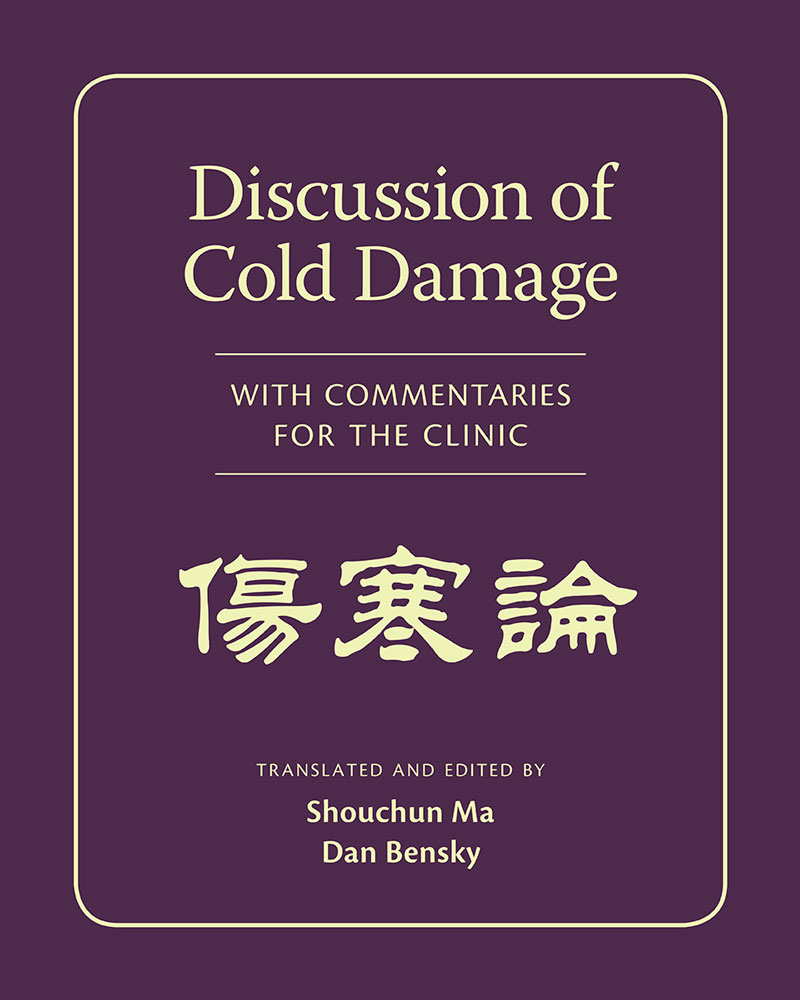
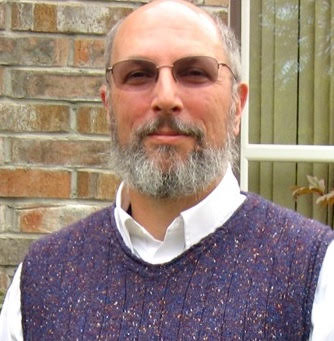

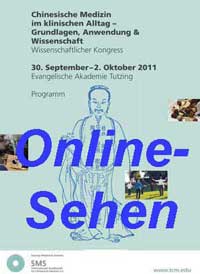
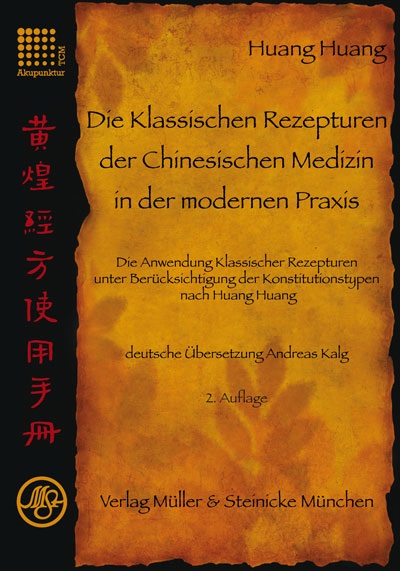
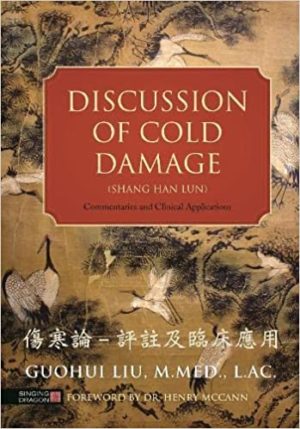
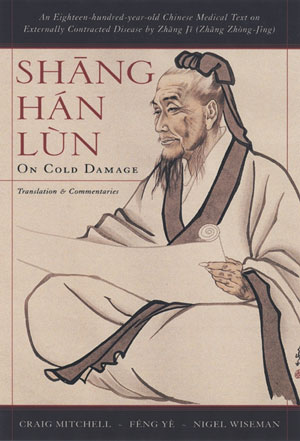
Bewertungen
Es gibt noch keine Bewertungen.